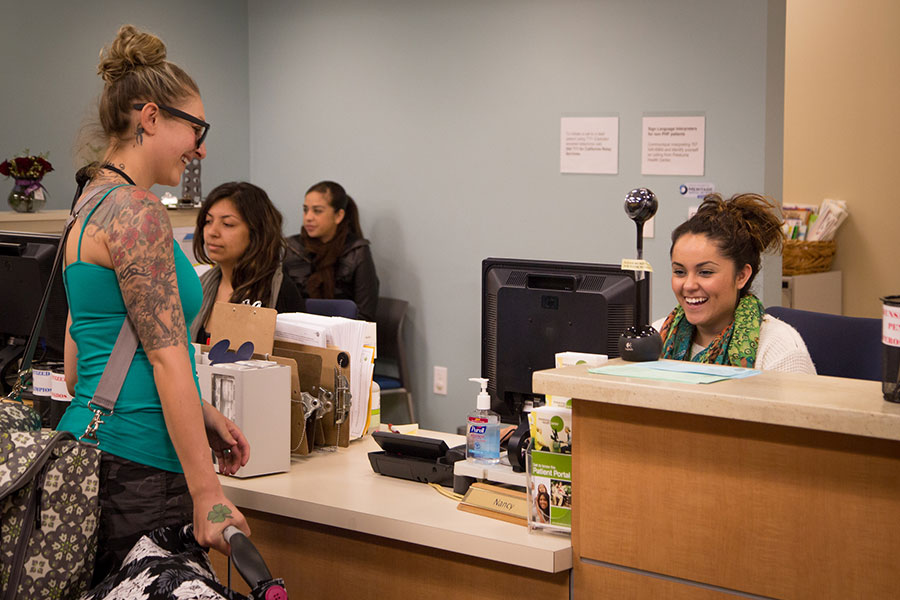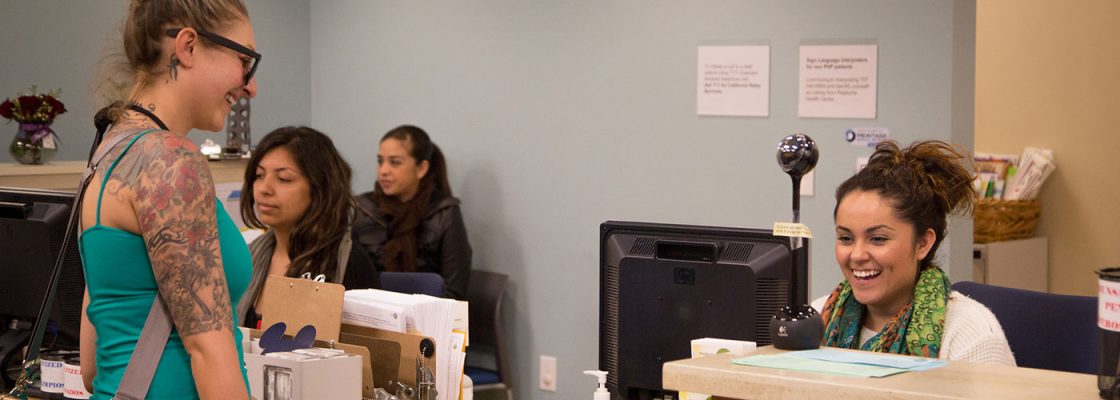Faced with a high no-show rate, Vista Family Health Center took a lesson from airlines and filled those unused time-slots with patients waiting “standby.” Patients calling with certain acute needs are offered the chance to come in and wait for a brief visit with a free doctor, coordinated by an “air traffic controller.” This year Vista saw over 10,000 patients with same-day standby appointments.

Two Problems, One Opportunity
Many safety net clinics are overwhelmed by demand, making it hard for them to offer adequate same-day visits. An appointment two weeks away, however, is of little use when you have a sick child, need antibiotics for an ear infection, or want an immediate STD test. At the same time, safety net patients often live hectic lives, which can make it difficult to keep the doctor’s appointments they do make. This leads to frequent no-shows, leaving unproductive gaps in providers’ schedules. But these two problems together offer a unique opportunity.
An Analogous Solution
Airline companies long ago solved the problem of unfilled seats by allowing a few travelers to “fly standby”— wait tentatively for a seat to open up on a booked-up flight. Though many airlines have largely replaced the practice with habitual overbooking, flying standby allowed airlines to get the most out of each flight while also accommodating travelers whose plans went awry or who need to fly at the last minute at an affordable price.
How It Works
- Patients call in with acute needs. Instead of simply offering these patients the next available appointment with their primary care doctor, they are told, “We are able to see you today. You might have to wait a little while, perhaps an hour. You might or might not see your primary doctor. If you are okay with that, come in.”
- These standby patients are organized into “waves”—an 8 a.m. wave, a 10 a.m. wave, a 1 p.m. wave, and a 3 p.m. wave, for instance. Patients are told to come in at one of those times, spread out by schedulers to prevent any one wave from being too numerous. Patients can choose to come in at any of the available wave times.
- When patients arrive to wait for a standby appointment, a medical assistant takes them to an exam room and records their vitals and patient history. Then the patients return to the waiting room to wait until a doctor is available.
- Meanwhile a standby coordinator—“air traffic controller”—uses a multi-screen station to monitor provider schedules and watch for no-shows. As patients cancel appointments or show up early, or late, or not at all, she adjusts provider schedules to squeeze in standby patients. The coordinator also keeps track of which providers are running behind schedule, so that she doesn’t assign them standby patients they don’t have time for.
- Patients are scheduled to replace a no-show ten minutes after the original appointment was scheduled to begin.
- When a patient goes in for their standby appointment, they see whichever provider the coordinator assigns, not necessarily their own primary care doctor. Because of their squeezed-in nature, the visits are likely to be shorter than normal appointments: usually 12-15 minutes.
- If a late patient shows up after their appointment slot had already been given to a standby patient, they are asked to wait for another no-show later, or, if their case is appropriate, put on standby to see another provider. They can also reschedule.
The Patient Perspective
- For patients, not being able to see a doctor when they get sick is both frustrating and off-putting. Having to wait days for an appointment can force patients to take more time off work or bend their schedule in costly ways. A wait of weeks discourages them from getting the care they need—or drives them to opt for an expensive or unnecessary ER visit instead.
- Between lack of transportation and difficulties taking time off from jobs or caring for children, safety net patients can struggle with keeping every appointment. The convenience of visiting a doctor on short-notice on a day they know they are able can make a big difference. Vista found that patients were willing to wait longer in the waiting room if it meant getting a same-day appointment.
- Same-day access to care increases patients’ sense that taking care of their health is easy and convenient, and improves their relationship with their primary care clinic.
The Clinic Perspective
- Building the capacity to offer same-day appointments despite very high demand is a major challenge of safety net clinics today.
- High no-show rates at clinics hamper care team efficiency and eat into a health center’s bottom line. However, reducing no-shows is a difficult challenge: strategies like ban-lists for frequent no-shows end up being ineffective and punitive for patients.
Best Uses, Biggest Impacts
Standby appointments work best for patients with straightforward acute needs—such as flu symptoms, pregnancy or STD tests, UTIs, pink eye, ear infections, or rashes. Preferably these should be simple enough that they don’t need a full 20 minutes with a doctor to deal with, but also pressing enough that patients are unwilling or unable to wait days or weeks for an appointment. Patients seeking routine checkups or prescription refills should be asked to make normal appointments.
The standby system also works best at bigger clinics, where a no-show rate of 20% means not a mere handful of open schedule slots each day but dozens, spread across many providers. Vista Family Health Center has up to 26 providers working each day, and sees an average of 8,000 patients each month.
Lessons from Practice
- When Vista piloted the program they quickly found that the “air traffic controller” was a full-time job. It is fast-paced work, tied to the phone and computer, and it requires very strong knowledge of a clinic’s scheduling and EHR software.
- Like any new initiative, standby can be challenging for staff to embrace, especially since it can often ostensibly mean busier schedules and less breathing room. However many providers found that treating a sick child on standby provided a refreshing change of pace to days filled mostly with patients struggling with serious, chronic illnesses.
What’s Next?
Since the beginning of the year Vista has seen more than 10,000 patients through their standby clinic, and they have not had to turn away any patients offered a standby visit. After piloting the idea by bringing in just a small number of standby patients, and finding it easy to fit them in (not to mention finding no shortage of potential standby patients), they have slowly increased the number of standby visits they take on. They now see an average of 150 standby patients each week, and they now see fill rates of 88% on a regular basis (up from 72%). With more room to expand, they hope to eventually seek a 100% fill rate and expand standby appointments to their evening hours and to Saturdays.
Learn More
- Vista Family Health Center is a part of Santa Rosa Community Health Centers in California. They see approximately 8,000 patients each month. Visit their website at srhealthcenters.org



